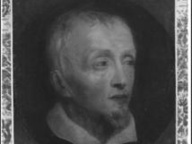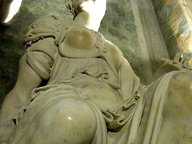Claire Fontaine

© Claire Fontaine
Dal 23 June 2016 al 7 August 2016
Roma
Luogo: Museo Pietro Canonica Villa Borghese
Indirizzo: via Pietro Canonica 2
Orari: da martedì a domenica 13-19 (ingresso consentito fino alle 18.30)
Curatori: Pier Paolo Pancotto
Enti promotori:
- Roma Capitale - Sovrintendenza Capitolina ai Beni Culturali
Costo del biglietto: ingresso gratuito
Telefono per informazioni: +39 060608
Sito ufficiale: http://www.museocanonica.it
Con la mostra di Claire Fontaine, la prima personale dell’artista presso una pubblica istituzione a Roma, prosegue al Museo Pietro Canonica di Roma il ciclo espositivo dal titolo Fortezzuola, promosso da Roma Capitale - Sovrintendenza Capitolina ai Beni Culturali. Il progetto, ideato e a cura di Pier Paolo Pancotto, è volto a far riflettere sul rapporto tra protagonisti dell’arte contemporanea internazionale e l’Italia e offre al pubblico l’opportunità, per la prima volta, di apprezzare la produzione di esponenti particolarmente rappresentativi della creatività odierna ma scarsamente presenti, se non del tutto assenti, nella scena espositiva pubblica italiana. Ancora oggi molti artisti stranieri si confrontano con il contesto storico e culturale italiano, rinnovando un’antica tradizione e reinterpretandone canoni e modalità esecutive. Ciascun autore è chiamato a realizzare un intervento originale concepito espressamente per le sale del museo, in stretta relazione alle loro caratteristiche storiche e strutturali. In sintonia con le linee guida generali di Fortezzuola.
Claire Fontaine, dopo aver soggiornato a più riprese a Roma, ha concepito un progetto ispirato al contesto storico e culturale del Museo Canonica che si basa su uno dei sistemi espressivi più ricorrenti nel suo percorso creativo: il ready made. Il progetto si articola in una serie di interventi che coinvolgono l’intero complesso espositivo. A far loro da comune denominatore il tema del ritratto, ideale omaggio al lavoro di Pietro Canonica che attorno a questo soggetto ha incentrato molta della sua produzione e, al tempo stesso, costituisce una riflessione sul concetto di scultura ed il significato che tale pratica espressiva possiede oggi, soprattutto in relazione ad un contesto museale. Dei ritratti, infatti, sono riprodotti su una serie di installazioni plastiche che appartengono alla serie delle Living Statues. Si tratta di opere che citano il registro vernacolare e popolare delle performance amatoriali cui si può assistere nel mondo intero in siti ad alta densità turistica. Le performance in questione consistono in un attore che finge, attraverso un travestimento e l’immobilità, di essere una statua. Il movimento concettuale di Claire Fontaine è quello di evocare con le sue sculture questo gesto rendendolo però paradossale: nel suo caso si tratta di oggetti che fingono di essere soggetti che fingono di essere oggetti. Questa riflessione è legata alle sue ricerche sul ready-made e le sue conseguenze nel campo della soggettività degli artisti, che esplorano le nuove forme di reificazione degli esseri e di umanizzazione degli oggetti. Claire Fontaine attraverso queste opere si lega fortemente alla tradizione della critica istituzionale, decretando implicitamente il carattere fondamentalmente turistico di ogni esperienza museale contemporanea, prodotto dalle ambizioni delle istituzioni stesse di raggiungere un pubblico sempre più vasto e delle attese e dei bisogni di questo stesso pubblico quando finalmente è accolto da un museo. I tre personaggi che Claire Fontaine realizzerà per il Canonica hanno un aspetto mitico e allegorico, due di loro si trovano sospesi in aria grazie a un dispositivo metallico che li fa apparire come levitanti (lo stesso usato da alcuni artisti di strada che simulano le statue viventi). Ioda, il saggio della saga di Guerre Stellari, rappresenterà l’intelligenza mostruosa e ridicolizzata dallo stereotipo della cultura popolare che George Lucas ha saputo tradurre in un personaggio alieno tra l’umano e l’animale, tra il vecchio e il bambino. Figura chiave nella cultura di guerra cui appartiene, creerà uno sguardo diverso e impertinente sui monumenti legati alla guerra e ai leader militari di cui il museo Canonica è ricco. Un Pinocchio adulto e calvo funziona come una rappresentazione ambigua dell’uomo adulto nel mondo contemporaneo; sinistro e patetico al tempo stesso, è un personaggio la cui umanità non ha cancellato il carattere moralmente mostruoso del naso lungo del burattino, dando a questo naso di carne un aspetto sessuale. La falsità fa parte della sua natura fisiologica e nessuna metamorfosi può più redimerla. La maschera comunemente nota come quella di Anonymous, dal nome del collettivo cyber-rivoluzionario internazionale che l’ha adottata per darsi un volto, è in realtà all’origine la rappresentazione del volto di Guy Fawkes che nel 1605 tentò di assassinare King James a Westminster Palace fallendo. La sua maschera è indossata da un personaggio di paglia e stoffa, bruciato il 5 novembre di ogni anno; è poi stata adottata durante gli scontri e le insurrezioni in vari luoghi del mondo per reclamare l’anonimato delle masse che insorgono contro la sorveglianza repressiva e antidemocratica. Qui Guy Fawkes apparirà come un anonimo personaggio di cui non si possono indovinare né l’età, né il sesso, né le intenzioni politiche ma solo il desiderio di sfuggire alla sorveglianza e all’identificazione. Come Martin Soto Climent, Alfredo Aceto e Claire Tabouret, Tillman Kaiser anche Claire Fontaine da luogo a un percorso visivo site specific sviluppato mantenendo un atteggiamento quasi “performativo” (operando di giorno in giorno all’interno del museo, abbandonandosi alle suggestioni del luogo) il cui esito finale sarà noto solo al termine della sua realizzazione, vale a dire a ridosso della data di inaugurazione della mostra. Tale aspetto sarà enfatizzato in particolar modo negli interventi previsti al primo piano e nei depositi del museo sempre volti a riflettere sul concetto di “identità” e le varie soluzioni visive attraverso cui esso può esplicitarsi una delle quali, la scultura, ha costituito il perno centrale della ricerca di Pietro Canonica lungo l’intero suo percorso creativo.
Claire Fontaine (collettivo fondato nel 2004 ed attivo a Parigi). Mostre personali (selezione): The Jewish Museum, New York (2013); Frac Haute Normandie (2013); Frac Provence-Alpes-Cote d’Azur (2013); Museion, Bolzano (2012); Museum of Contemporary Art, Miami (2010); Witte de With, Rotterdam (2008); Palais de Tokyo, Paris (2007); Kunsthalle, Zurigo (2007)
Mostre collettive (selezione): AV Festival, Newcastle (2016); Punk. Sus rastros en el arte contemporáneo, MacBa, Barcellona (2016), Signori prego si accomodino, Venezia, Casa Scatturin (2015); Food, Mucem, Marseilles (2014); The Crime Was Almost Perfect, Witte de With, Rotterdam (2014); Relaunch, KW Institute, Berlin (2013); Showing Its Colours, Marta, Herford, (2013); Manifesta 9, Genk, Limburg (2012); Contemplating the Void, The Guggenheim Museum, New York (2009); Fax, The Drawing Center, New York (2009); Manifesta 7, Rovereto (2008).
La mostra è realizzata in collaborazione con la Galleria T293, Roma.
Inaugurazione: giovedì 23 giugno ore 16-19
SCARICA IL COMUNICATO IN PDF
COMMENTI

-
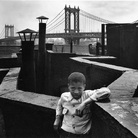 Dal 2 December 2025 al 19 February 2026
Milano | Centro Culturale di Milano
Dal 2 December 2025 al 19 February 2026
Milano | Centro Culturale di Milano
Walter Rosenblum. Il mondo e la tenerezza
-
 Dal 30 November 2025 al 12 April 2026
Gallarate | Museo MA*GA
Dal 30 November 2025 al 12 April 2026
Gallarate | Museo MA*GA
Kandinsky e l’Italia
-
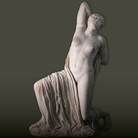 Dal 29 November 2025 al 12 April 2026
Roma | Musei Capitolini
Dal 29 November 2025 al 12 April 2026
Roma | Musei Capitolini
La Grecia a Roma
-
 Dal 22 November 2025 al 3 May 2026
Torino | Sale Chiablese dei Musei Reali
Dal 22 November 2025 al 3 May 2026
Torino | Sale Chiablese dei Musei Reali
Orazio Gentileschi. Un pittore in viaggio
-
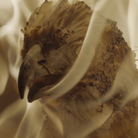 Dal 20 November 2025 al 25 January 2026
Firenze | Palazzo Strozzi
Dal 20 November 2025 al 25 January 2026
Firenze | Palazzo Strozzi
Andro Eradze. Bones of Tomorrow
-
 Dal 21 November 2025 al 28 March 2026
Cuneo | Complesso Monumentale di San Francesco
Dal 21 November 2025 al 28 March 2026
Cuneo | Complesso Monumentale di San Francesco
La Galleria Borghese. Da Raffaello a Bernini. Storia di una collezione
